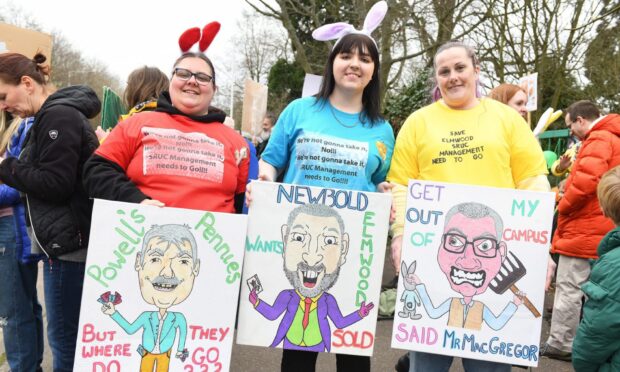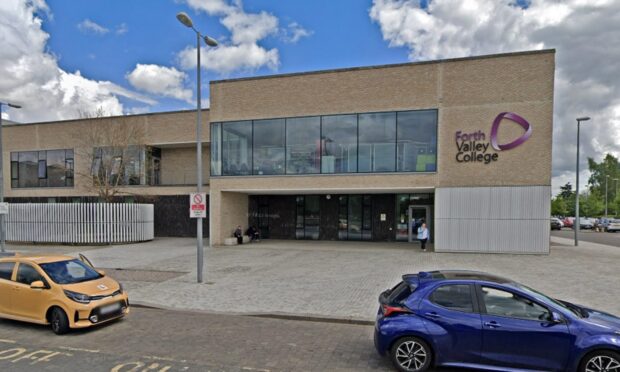Sir, – The university’s perverse decision to connect its wind farm to St Andrews via a massive detour through Cameron and down the Largo Road begs a lot of questions.
Presumably it believes that installing the cabling underground along roads, with all the extra work to avoid compromising ditches, drains, and existing pipework and cabling, is still cheaper than paying farmers for a direct overhead connection across fields from Kenly to St Andrews, even though this would require less than a third of the cabling.
Why is this? One wonders if it isn’t because Fife Council which owns the verges and roads does not charge contractors the true cost of digging up and making good roads and verges when they lay their cables. Or perhaps negotiating with a number of farmers –aka ‘the local community’ – is too bothersome.
Either way it would be good to know the total figures for under-grounding the 10+ miles of the proposed Kenly-St Andrews cable.
What is beyond doubt is that the costs borne by residents, businesses and road users who have to suffer delays and substantial detours in order to carry on their business for the four to six months the work is projected to take are not costs which the university will have to bear. And these are costs which the university feels it has a right to inflict on the local community without even the most minimal consultation.
As for the university’s grand justification, that their plan will protect jobs, how many more jobs could be protected, or even created, were the university to select more cost-effective routes which had community backing? One thing is certain: if this were a private sector company, they would be talking to farmers and taking the cheapest overhead route
A. J. Derks.
The Coachhouse,
Gibliston Road,
Arncroach,
Pittenweem.
Public must be consulted
Sir, – Do those responsible for PR, communications and planning at St Andrews University have the remotest clue about consultation or community relations?
Responding to concerns about its application to connect the Kenly wind farm to the grid at St Andrews, the university defended its decision to undertake zero consultation with affected community councils, residents and businesses.
The university “don’t believe it would be fair to waste people’s time consulting or engaging in detail on a project which we can’t yet confirm will go ahead”.
But the university is apparently quite happy to waste its own time and resources on putting together a formal planning application for a grid connection despite its uncertainty of the wind farm’s viability.
It is also quite happy to ignore the standard practice for planning applications requiring an Environmental Impact Assessment which calls for local consultation before an application is finalised and lodged.
“Consultation” after an application has been consented denies the local community any chance of getting the proposal amended so damaging impacts are reduced.
How can there be “consultation” on a done deal?
Residents and businesses are justifiably worried.
Ten miles of 11,000 volt cables will be laid along verges and roads, coming perilously close to homes, and shutting roads, including the A915 Largo Road into St Andrews and the hospital, for four to six months.
No one understands why the university has chosen a maximally circuitous and disruptive route rather than a direct connection across farmland or via the A917.
Perhaps the reason the university decided to shut the local communities out of this process is because it knew its choice of route was indefensible and would arouse considerable opposition from residents, businesses and road users who do not see why they should bear the cost of its misguided wind farm project.
The net effect has been to confirm the university’s absolute contempt for anyone who might question or disagree with its plans on this project.
North-east Fifers might be forgiven for fearing that the university’s warm words about consultation and community relations mask a 21st Century version of droit du seigneur.
Graham Lang.
Westermost 6, Coaltown of Callange,
Ceres.
We will run our own country
Sir, – I have seldom been so angry!
How dare US President Barrack Obama interfere and tell us how to vote and run our country.
This man, whose presidency is often described as a non-event starts off by cajoling and referring to the “special relationship”, which is a myth and only exists when and if America wishes it.
He ends as all bullies do by uttering threats of dire consequences if we vote to leave the EU.
How would he like America to be run by a small, unelected greedy cabal of self-seekers who have pocketed millions of Euros and seem to be out of control and above the law?
Well, I want to live in a Great Britain ruled by British people for British people and accountable only to them.
As for Obama and his speeches my message to him is very simple – “Go home, Yank. And mind your own business!
N. Addison.
The Maltings,
Montrose.
We need more on the economy
Sir, – One significant issue facing Scotland has been conspicuously absent from political debates and speeches during the current Holyrood election campaign.
Scotland’s economy is widely recognised as being in a parlous state as evidenced by rising unemployment, reduced investment and business closures, so why is this central issue not being given a higher profile by politicians?
So far in this election campaign we witness politicians competing with one another to increase public spending and then squabbling about which tax rates should be increased to pay for this increased spending.
Increased tax rates have a negative impact on economic growth. Surely a much better, long term solution would be to seek ways to improve the overall economy thereby building taxation income to fund better public services from an expanding economic base?
This latter solution would expand the size of the economy cake providing a more prosperous future for all, rather than making us all poorer by trying to find new ways to divide up an ever smaller cake.
GM Lindsay.
Whinfield Gardens,
Kinross.
We must look at the potential
Sir, -I really do wonder if those who give examples of successful food markets throughout the UK, or indeed the world, actually look at the market potential of such places in their attempts to justify use of Perth City Hall as a similar food market.
Latest such offering is from Charles Wardrop who openly criticises PKC officials and councillors for their lack of business acumen.
A few weeks ago another correspondent went to great lengths to relate the success of the Reading Terminal market in Philadelphia.
City population over 1.5m, location almost midway between and under 100 miles from either New York, population 8.5m, and Washington DC, population 67m, arguably on one of the busiest routes in all USA.
Without question Scotland has wonderful food products.
However, without exception, they can be sourced exactly where produced or landed in a whole range of unique farmshops and food outlets extending our national tourism draw to a’ the airts in all their glory, rather than to a valueless rather than priceless, over-rated and oversized for its location early 20th Century embarrassment.
Shopping and city centre culture has moved on and so must we.
Councillor Tom Gray,
West Park
Braco.
Independence question
Sir, – The claim by Teresa May that Brexit would lead to Scottish independence is without merit.
If a second referendum were held in those circumstances the SNP would have no alternative but to accept that Scotland’s currency would be the Euro which would make independence even less attractive than during the first time round.
Furthermore, if the principle had been established that one part of the country can separate from another on grounds of policy difference, then it follows with the Union entrenched in Dumfries and Galloway and the Borders, these regions would be able to remain within the UK without fear or favour.
William Loneskie,
Justice Park,
Oxton.










